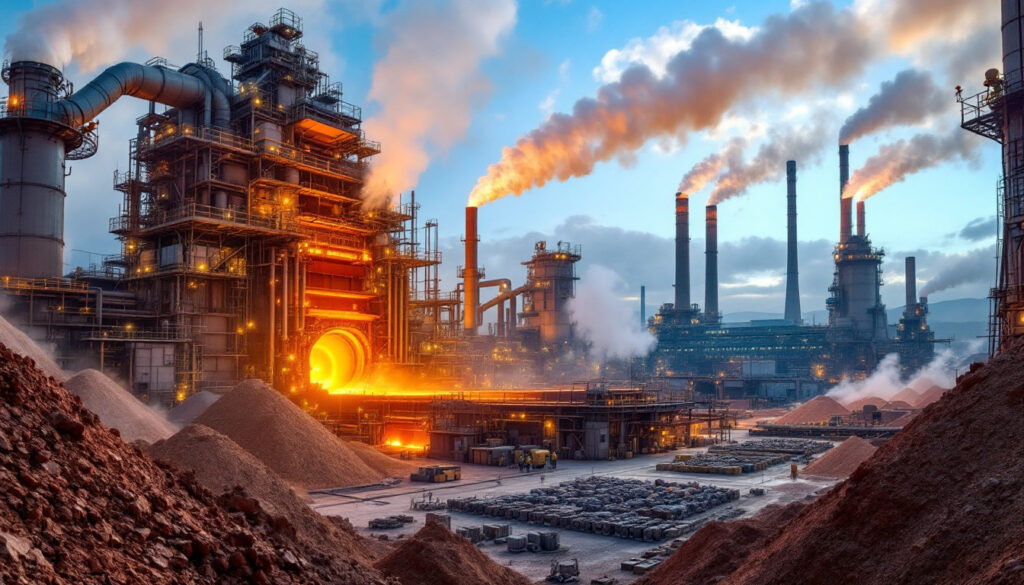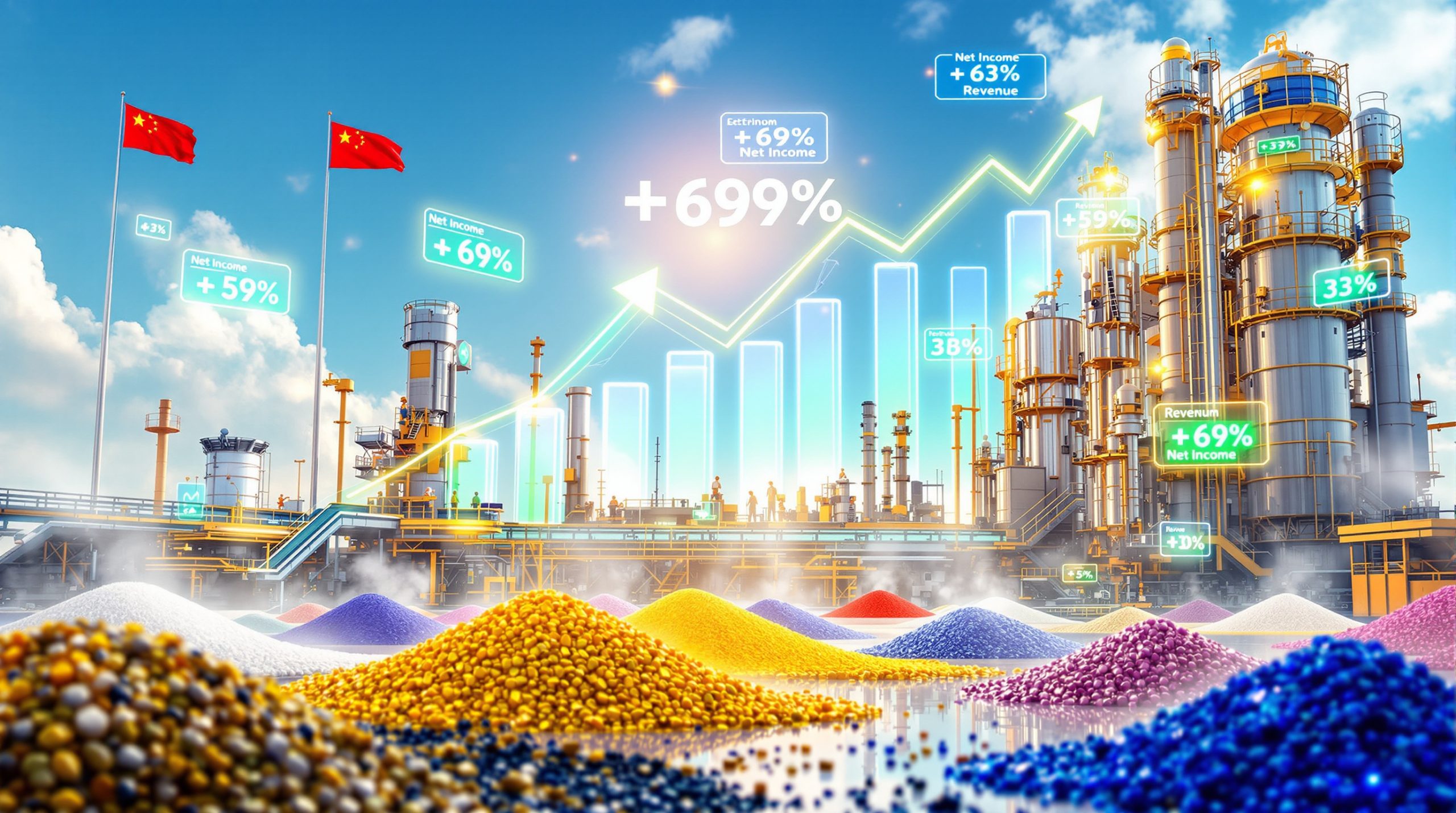Understanding the Global Copper Smelting Expansion
The global copper smelting industry is undergoing significant transformation driven by geopolitical shifts, supply chain reconfigurations, and advancements in recycling technologies. With record-low treatment and refining charges (TCs/RCs) at $(40.20) per tonne as of April 2025, smelters face financial pressures amid tightening concentrate supplies. Aurubis, Europe's largest copper producer, highlights the strategic move toward regional self-sufficiency, particularly in Europe and the United States, to mitigate geopolitical risks and tariff uncertainties. This report examines the evolving landscape of copper smelting growth, exploring capacity expansion, recycling integration, mining challenges, and technological innovations shaping the industry's future.
The Strategic Shift in Copper Smelting Capacity
Geopolitical Drivers of Smelting Growth
Countries are prioritizing supply chain independence by relocating smelting capacity closer to mining operations. Aurubis CEO Toralf Haag notes that geopolitical tensions and tariff discussions have accelerated this trend, with nations seeking to secure raw material processing within their borders. For example, Europe and the U.S. are investing in domestic smelting infrastructure to reduce reliance on foreign concentrate supplies, though project timelines remain lengthy—4–5 years for recycling smelters and longer for primary facilities.
Current Market Conditions
The copper concentrates market is under strain, with TCs/RCs plunging to historic lows of $(40.20) per tonne due to limited feedstock availability. Aurubis, which currently uses a 55:45 ratio of concentrates to scrap, emphasizes the need for diversified supply chains to navigate these challenges. Furthermore, understanding copper price dynamics becomes essential as industry-wide, smelters typically rely on 75% concentrates and 25% scrap, but Aurubis aims to achieve a 50:50 balance to enhance circularity and supply security.
How Is the Copper Smelting Industry Evolving?
Regional Growth Opportunities
Europe and the U.S. are emerging as key growth markets for smelting capacity. Aurubis produces over 1 million tonnes of copper cathodes annually in Europe and is commissioning a secondary smelter in Georgia, U.S., to meet regional demand. However, Haag warns of overcapacity risks in China, where concentrated investments could disrupt global copper market 2025 equilibrium.
The Recycling Revolution
Recycling is reshaping feedstock strategies, with Aurubis targeting a 50% scrap utilization rate to reduce dependence on mined concentrates. This shift supports circular economy goals and mitigates supply chain vulnerabilities, particularly as scrap availability rises in industrialized regions. Advanced sorting and processing technologies enable smelters to handle complex materials, further driving recycling adoption.
The Critical Relationship Between Mining and Smelting
Supply Chain Challenges
Meeting projected copper demand requires simultaneous mining expansion and recycling scale-up. Haag stresses that greenfield projects, brownfield expansions, and reactivating idled mines are essential to bridging the supply-demand gap. Long-term partnerships between miners and smelters are critical to ensuring stable concentrate flows, especially amid geopolitical disruptions. Additionally, Rio Tinto's copper strategy highlights how major players are responding to these industry challenges.
Balancing Capacity Growth
The industry must align smelting capacity with mining output to avoid overinvestment. Tariff policies and trade dynamics complicate this balance, necessitating strategic coordination across the value chain. For instance, U.S. tariffs on imported copper products incentivize domestic smelting but require parallel investments in mining to ensure feedstock sufficiency. According to recent analysis, copper smelting capacity is expected to outpace mining production in the coming years, potentially exacerbating the concentrate shortage.
The Future of Copper Smelting Technology
Innovation in Processing Methods
Technological advancements are enabling smelters to process lower-grade and complex materials efficiently. Aurubis leverages proprietary methods to handle polymetallic concentrates, reducing waste and improving recovery rates. Environmental regulations further drive innovation, with smelters adopting energy-efficient furnaces and carbon capture systems to meet sustainability targets. In addition, mining digital transformation is playing a crucial role in modernizing operations throughout the copper value chain.
Economic Implications of Copper Smelting Growth
Investment Considerations
Smelting projects demand long-term capital commitment due to extended development timelines. Negative TCs/RCs strain profitability, pushing firms to diversify revenue through byproduct recovery (e.g., sulfuric acid, precious metals). Vertical integration, as seen in Aurubis' cathode-to-wire-rod production, enhances margin resilience and market responsiveness. Consequently, understanding the economic factors driving copper rally becomes essential for stakeholders evaluating investment opportunities in this sector.
According to data from Fastmarkets, the disconnect between rapidly expanding smelting capacity and lagging mine production is creating unprecedented challenges for the industry, with concentrate shortages expected to persist through 2027.
FAQ About Copper Smelting Growth
What is driving the growth in copper smelting capacity?
Geopolitical tensions and supply chain security concerns are prompting nations to localize smelting capacity near mines, reducing reliance on international trade.
How long does it take to build new smelting capacity?
Recycling smelters require 4–5 years, while primary smelters take longer due to permitting and infrastructure complexities.
What challenges is the copper smelting industry currently facing?
Record-low TCs/RCs, concentrate shortages, and balancing capacity expansion with mining output are key challenges.
How is recycling changing the copper smelting landscape?
Recycling now accounts for 45% of Aurubis' feedstock, with plans to reach 50%, enhancing sustainability and supply chain stability.
Ready to Capitalise on the Next Major Copper Discovery?
Stay ahead of the market with real-time alerts on significant ASX copper discoveries, powered by Discovery Alert's proprietary Discovery IQ model that transforms complex mineral data into actionable investment insights. Explore how historic discoveries have generated substantial returns by visiting Discovery Alert's dedicated discoveries page and begin your 30-day free trial today.




